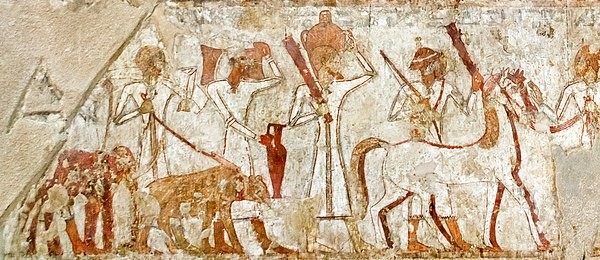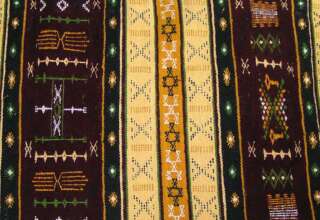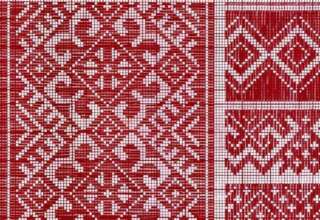
Following the 1952 revolution, Egypt declared itself a republic. At the time of the fall of the Egyptian monarchy in the early 1950s, less than half a million Egyptians were considered upper class and rich, four million middle class and 17 million lower class and poor.[78] Fewer than half of all primary-school-age children attended school, most of them being boys. Nasser’s policies changed this. Land reform and distribution, the dramatic growth in university education, and government support to national industries greatly improved social mobility and flattened the social curve. From academic year 1953–54 through 1965–66, overall public school enrolments more than doubled. Millions of previously poor Egyptians, through education and jobs in the public sector, joined the middle class. Doctors, engineers, teachers, lawyers, journalists, constituted the bulk of the swelling middle class in Egypt under Nasser.[78] During the 1960s, the Egyptian economy went from sluggish to the verge of collapse, the society became less free, and Nasser’s appeal waned considerably.
In 1970, President Nasser died and was succeeded by Anwar Sadat. During his period, Sadat switched Egypt’s Cold War allegiance from the Soviet Union to the United States, expelling the Soviet advisors in 1972. Egypt was renamed as Arab Republic of Egypt in 1971. Sadat launched the Infitah economic reform policy, while clamping down on religious and secular opposition. In 1973, Egypt, along with Syria, launched the Fourth Arab-Israeli War (Yom Kippur War), a surprise attack to regain part of the Sinai territory Israel had captured six years earlier. In 1975, Sadat shifted Nasser’s economic policies and sought to use his popularity to reduce government regulations and encourage foreign investment through his programme of Infitah. Through this policy, incentives such as reduced taxes and import tariffs attracted some investors, but investments were mainly directed at low risk and profitable ventures like tourism and construction, abandoning Egypt’s infant industries. Because of the elimination of subsidies on basic foodstuffs, it led to the 1977 Egyptian Bread Riots. Sadat made a historic visit to Israel in 1977, which led to the 1979 Egypt-Israel peace treaty in exchange for Israeli withdrawal from Sinai. In return, Egypt recognised Israel as a legitimate sovereign state. Sadat’s initiative sparked enormous controversy in the Arab world and led to Egypt’s expulsion from the Arab League, but it was supported by most Egyptians.[81] Sadat was assassinated by an Islamic extremist in October 1981.
Hosni Mubarak came to power after the assassination of Sadat in a referendum in which he was the only candidate.[82] He became another leader to dominate the Egyptian history. Hosni Mubarak reaffirmed Egypt’s relationship with Israel yet eased the tensions with Egypt’s Arab neighbours. Domestically, Mubarak faced serious problems. Mass poverty and unemployment led rural families to stream into cities like Cairo where they ended up in crowded slums, barely managing to survive. On 25 February 1986, the Security Police started rioting, protesting against reports that their term of duty was to be extended from three to four years. Hotels, nightclubs, restaurants and casinos were attacked in Cairo and there were riots in other cities. A daytime curfew was imposed. It took the army three days to restore order. 107 people were killed.
In the 1980s, 1990s, and 2000s, terrorist attacks in Egypt became numerous and severe, and began to target Christian Copts, foreign tourists and government officials. In the 1990s an Islamist group, Al-Gama’a al-Islamiyya, engaged in an extended campaign of violence, from the murders and attempted murders of prominent writers and intellectuals, to the repeated targeting of tourists and foreigners. Serious damage was done to the largest sector of Egypt’s economy—tourism—and in turn to the government, but it also devastated the livelihoods of many of the people on whom the group depended for support. During Mubarak’s reign, the political scene was dominated by the National Democratic Party, which was created by Sadat in 1978. It passed the 1993 Syndicates Law, 1995 Press Law, and 1999 Nongovernmental Associations Law which hampered freedoms of association and expression by imposing new regulations and draconian penalties on violations. As a result, by the late 1990s, parliamentary politics had become virtually irrelevant and alternative avenues for political expression were curtailed as well. Cairo grew into a metropolitan area with a population of over 22 million.






